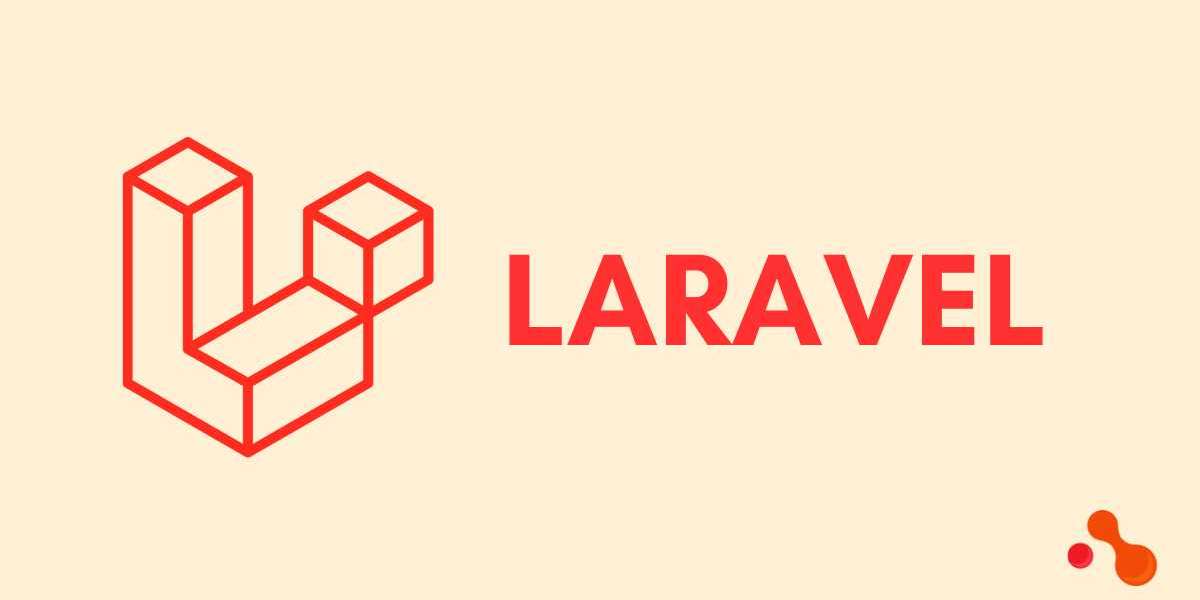Introduction
Laravel is a popular web development framework known for its simplicity, elegance, and rich feature set. Whether you're a beginner or an experienced developer, mastering Laravel can significantly boost your productivity and open up new possibilities for creating web applications. In this blog, we'll dive into advanced tips and tricks for Laravel that are easy to understand for anyone. Whether you're just starting or have some experience with Laravel, these techniques will help you build better and more efficient web applications. Let's explore the power of Laravel and take your skills to the next level!
Understanding the Laravel Ecosystem
Laravel is a popular PHP framework known for its simplicity and elegance in web development. In this section, we'll explore the key components that make up the Laravel ecosystem and understand how they work together to streamline your development process.
A. Recap of Laravel fundamentals (optional)
If you're new to Laravel, a quick recap of its core concepts will help you grasp the ecosystem better. Laravel follows the Model-View-Controller (MVC) architectural pattern, where models handle data, views represent the user interface, and controllers manage application logic.
B. Laravel ecosystem overview (Blade templating, Eloquent ORM, Artisan commands, etc.)
- Blade Templating: Blade is Laravel's powerful templating engine that simplifies the process of creating dynamic views. With its straightforward syntax and template inheritance, Blade makes it easy to build reusable UI components and layouts.
- Eloquent ORM: Laravel's Eloquent ORM allows you to interact with your database using expressive, object-oriented syntax. It simplifies database operations and enables you to define relationships between database tables effortlessly.
- Artisan Commands: Artisan is the command-line interface that comes bundled with Laravel. It provides various helpful commands to automate repetitive tasks, generate code, and manage your application smoothly.
C. Benefits of utilizing the complete Laravel ecosystem in your projects
By leveraging the entire Laravel ecosystem, you gain significant advantages:
- Enhanced productivity: The intuitive tools and syntax reduce development time and effort.
- Maintainable code: The MVC pattern and eloquent syntax promote clean and organized code.
- Community support: Laravel's vast and active community ensures a wealth of resources and solutions.
- Scalability: Laravel's built-in features support the growth of your applications over time.
In conclusion, understanding the Laravel ecosystem allows you to harness the full potential of this powerful framework, enabling you to build robust and scalable web applications with ease. Whether you're a seasoned developer or just starting, Laravel's ecosystem will undoubtedly boost your productivity and streamline your development process.
Performance Optimization Techniques
In the fast-paced world of web development, optimizing your Laravel applications is crucial for delivering a seamless user experience. Let's explore some performance optimization techniques that can turbocharge your web app's speed and responsiveness.
A. Caching Strategies: Caching stores frequently accessed data to reduce database queries and server load. With Laravel's built-in caching mechanisms like Redis and Memcached, you can significantly improve application speed.
B. Database Indexing and Query Optimization: Properly indexing your database tables and optimizing queries can drastically enhance database performance. It ensures faster data retrieval and reduces the execution time of complex queries.
C. Implementing Eager Loading: Eager loading allows you to fetch all necessary data in one query, preventing the N+1 query problem. This efficient approach reduces database round trips and boosts loading times.
D. Redis Integration: By integrating Redis into your Laravel app, you can leverage its powerful caching and data structure capabilities. Redis serves as a lightning-fast data store, improving data retrieval speed and overall application performance.
If you want to take advantage of these performance optimization techniques but lack the expertise, consider hire Laravel developers from a reputable Laravel development company. Their expertise in Laravel development services can help you create high-performing web applications that impress users and boost your business.
Advanced Eloquent ORM Techniques
In Laravel development services, understanding the Eloquent ORM is crucial for building efficient and powerful applications. Let's explore some advanced Eloquent techniques that will level up your skills:
A. Defining Complex Relationships: Learn how to create intricate relationships between models, like one-to-many, many-to-many, and polymorphic associations. Mastering this enables you to fetch related data effortlessly.
B. Customizing Model Mutators and Accessors: Customize the attributes of your models easily with mutators and accessors. You can modify data before storing or retrieving it, making your code more readable and maintainable.
C. Leveraging Scopes for Reusable Queries: Simplify your database queries by using scopes. Scopes allow you to define common query logic once and reuse it throughout your project, saving time and effort.
D. Working with Raw SQL Expressions: Sometimes complex queries require raw SQL expressions. Discover how to use them securely within Eloquent queries to fetch data with precision.
For exceptional Laravel development company often hire Laravel developers who are adept at these techniques, ensuring smooth and efficient application development.
Mastering Blade Templating
Mastering Blade Templating in Laravel is essential for creating dynamic and efficient web applications. Whether you're looking to hire Laravel developers or enhance your own skills, here are some key points to help you understand the concept easily:
- Blade Templating: Laravel's powerful templating engine allows you to create reusable Blade components and layouts, streamlining your code structure for better maintainability.
- Conditional Rendering: With Blade, you can easily control the display of content based on conditions. Use @if, @else, @elseif, and @unless directives to make your views more dynamic.
- Custom Directives: Extend Blade's functionality by creating custom directives tailored to your project's needs. This enables you to encapsulate complex logic into simple Blade syntax.
- Template Inheritance: Blade template inheritance promotes code reusability by allowing you to create master layouts that other views can extend. This way, you maintain a consistent design across your application.
Mastering Blade Templating opens up opportunities for Laravel development services to create scalable and maintainable projects. Whether you're part of a Laravel development company or hiring Laravel developers, a strong grasp of Blade Templating will make your applications more efficient and easier to maintain.
Artisan Commands and Task Scheduling
In Laravel development, mastering Artisan commands and task scheduling is crucial for streamlining your workflow and automating repetitive tasks. Here's a concise guide to help you understand the key concepts:
A. Creating Custom Artisan Commands
- Artisan is Laravel's command-line interface, offering a range of built-in commands.
- Learn to build custom commands for specific tasks unique to your project.
- Use the "make:command" Artisan command to generate a new custom command template.
- Implement your desired logic inside the command's "handle" method.
- Execute the custom command using "php artisan command:name."
B. Automating Tasks with Laravel's Task Scheduling
- Laravel's task scheduling simplifies the execution of recurring tasks.
- Utilize the "Kernel.php" file to define scheduled tasks and their frequency.
- Schedule tasks to run at specified intervals using the "schedule" method.
- Choose from a variety of frequency options like hourly, daily, weekly, etc.
- Ensure the task scheduler runs continuously through cron jobs or task runners.
C. Managing Application Assets with Asset Compilation Commands
- Laravel provides powerful asset management with Mix, a Webpack-based tool.
- Compile and bundle CSS, JavaScript, and other assets for optimized performance.
- Customize asset configurations in "webpack.mix.js" for different environments.
- Use Mix's versioning to prevent caching issues when updating assets.
D. Integrating Third-Party Artisan Commands Effectively
- Enrich your development process by incorporating third-party Artisan commands.
- Explore packages that extend Laravel's functionality and integrate seamlessly.
- Install external packages using Composer, Laravel's package manager.
- Register the commands in "app/Console/Kernel.php" for easy access.
By mastering these Artisan commands and task scheduling techniques, you can enhance your Laravel development services and streamline your workflow. If you're seeking professional support, consider hiring Laravel developers from a reputed Laravel development company to benefit from their expertise and create outstanding web applications.
Advanced Routing Techniques
Advanced Routing Techniques in Laravel can greatly enhance your web development projects. Understanding these concepts will allow you to create more efficient and organized applications. Here are some key techniques explained in simple terms:
A. Route Model Binding:
- Easily fetch model instances directly from URLs.
- Improves code readability and simplifies controller methods.
- Use it with eloquent models for database querying convenience.
B. Grouping Routes:
- Organize your routes into logical groups for better maintenance.
- Apply middleware to specific route groups for added security.
- Easily manage common attributes like URL prefixes and namespaces.
C. Subdomain Routing:
- Create dynamic subdomains for different sections of your app.
- Handle requests based on subdomains efficiently.
- Useful for offering personalized experiences to users.
D. Route Caching:
- Boost application performance by caching frequently accessed routes.
- Reduces the overhead of route registration during each request.
- Especially beneficial for projects with numerous routes.
Whether you're a business looking to hire Laravel developers or seeking Laravel development services from a reputable company, understanding these advanced routing techniques will help you build more robust and performant applications. Happy routing!
Security Best Practices
In the world of Laravel development services, security is paramount. Protecting your web applications from potential threats is crucial to safeguarding sensitive data and ensuring a positive user experience. Here are some easy-to-understand security best practices that any Laravel developer, including those from a Laravel development company or freelance Laravel developers, should follow:
A. Sanitizing and Validating User Input:
- Use Laravel's built-in validation tools to ensure only safe and expected data enters the application.
- Sanitize input data by removing harmful characters and scripts to prevent XSS attacks.
B. Preventing Common Security Vulnerabilities:
- Guard against Cross-Site Request Forgery (CSRF) attacks by adding CSRF tokens to forms.
- Implement secure authentication mechanisms to protect user accounts and sensitive data.
C. Utilizing Laravel's Authentication and Authorization Features:
- Leverage Laravel's robust authentication system for user logins, registration, and password reset functionality.
- Utilize authorization features like policies and gates to control user access to specific resources.
D. Implementing API Throttling and Rate Limiting:
- Apply rate limiting to APIs to prevent abuse and protect against DDoS attacks.
- Set sensible API throttling limits to manage API requests effectively.
By incorporating these security best practices into your Laravel projects, whether you hire Laravel developers or tackle the development yourself, you can build more secure and reliable web applications, earning the trust of your users and clients alike.
Real-time Features with Broadcasting
Real-time features are essential in modern web applications, enabling instant updates and interactions between users. Laravel makes implementing real-time functionality a breeze with its broadcasting capabilities. Here's a straightforward explanation of how it works:
A. Setting up broadcasting and using Laravel Echo:
- Laravel provides out-of-the-box support for broadcasting events to the front-end using WebSockets.
- Start by configuring the broadcasting driver (e.g., Pusher, Redis) in the
broadcasting.phpfile. - Install Laravel Echo, a JavaScript library that simplifies handling real-time events on the client-side.
B. Creating real-time events and listeners:
- Define your real-time events as simple PHP classes, making it easy to organize and manage.
- Specify what data should be broadcasted along with the event.
- Create event listeners to handle the broadcasted data on the client-side.
C. Integrating websockets for live updates:
- WebSockets provide persistent connections between the server and clients, enabling real-time communication.
- Laravel's broadcasting system seamlessly integrates with popular WebSocket servers like Pusher or Redis.
D. Broadcasting notifications and messages:
- Leverage broadcasting to send real-time notifications to users when specific events occur.
- Implement live chat or messaging systems by broadcasting messages instantly.
By following these steps, you can enhance your Laravel application with real-time features, delivering a more interactive and dynamic user experience.
Advanced Testing Strategies
Testing your Laravel applications is crucial for ensuring their reliability and functionality. Here are some advanced testing strategies:
A. Comprehensive Unit Tests: Write tests that cover complex scenarios to validate the behavior of individual units of your code.
B. Factories and Seeders: Use factories to generate test data quickly, and seeders to populate your database with sample data for testing.
C. Test-Driven Development (TDD): Follow TDD principles by writing tests before implementing new features. This approach ensures that your code meets the desired specifications.
D. Multiple Test Environments: Perform tests with different environments like PHPUnit for unit tests and Dusk for browser automation tests to ensure a well-rounded testing suite.
Integrating External Services
Laravel allows seamless integration of external services into your application. Here's how you can do it:
A. Third-party API Integration: Integrate external APIs to fetch data or enable additional functionalities in your Laravel app.
B. Cloud Storage Services: Work with cloud storage services like Amazon S3 or Google Cloud Storage to store and retrieve files securely.
C. Social Media Authentication: Implement OAuth for social media login to allow users to sign in using their existing social accounts.
Scaling Laravel Applications
As your Laravel application grows, scaling becomes essential for handling increased traffic and maintaining performance. Consider these strategies:
A. Horizontal and Vertical Scaling: Understand the differences between horizontal (adding more servers) and vertical (upgrading server resources) scaling to choose the appropriate approach.
B. Load Balancing and Server Optimization: Distribute incoming traffic across multiple servers to improve response times and prevent overloading.
C. Utilizing Caching: Implement caching mechanisms to store frequently accessed data, reducing the load on the database and speeding up responses.
D. Queue Management: Use Laravel's built-in queue system to manage heavy workloads efficiently and handle tasks asynchronously.
By mastering these advanced techniques, you can elevate your Laravel development skills and build robust, efficient, and scalable applications with ease. Happy coding!
Conclusion
In this blog, we've explored advanced tips and tricks to help you become a master Laravel developer. We delved into performance optimization, Eloquent ORM techniques, Blade templating, Artisan commands, and more. Remember, continuous learning is key to mastering Laravel. Don't hesitate to experiment and explore the Laravel ecosystem further. With dedication and practice, you'll build remarkable web applications and unleash your creativity. Embrace the challenges, keep honing your skills, and soon you'll be crafting powerful and elegant solutions with ease. Happy coding and may your Laravel journey be fulfilling and rewarding!








